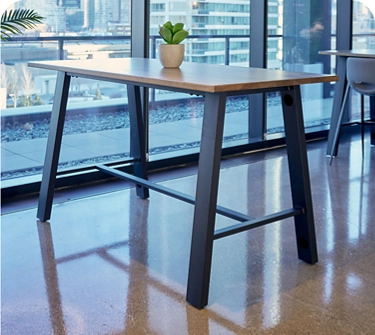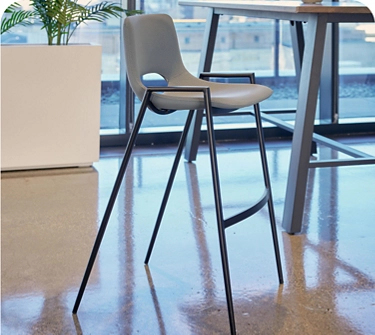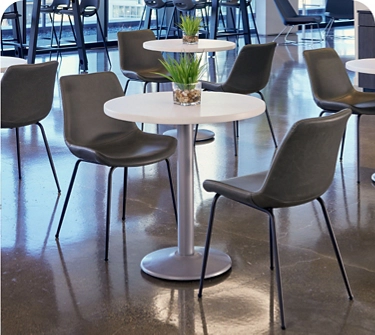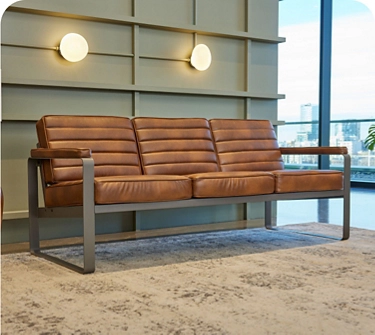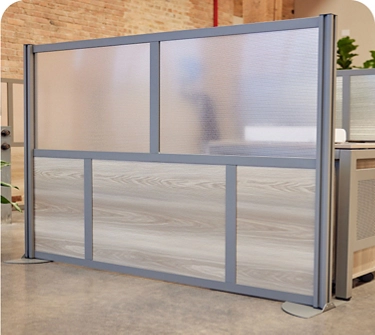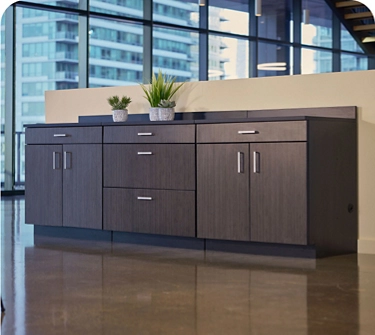- Home
- Office Furniture
- Breakroom Furniture
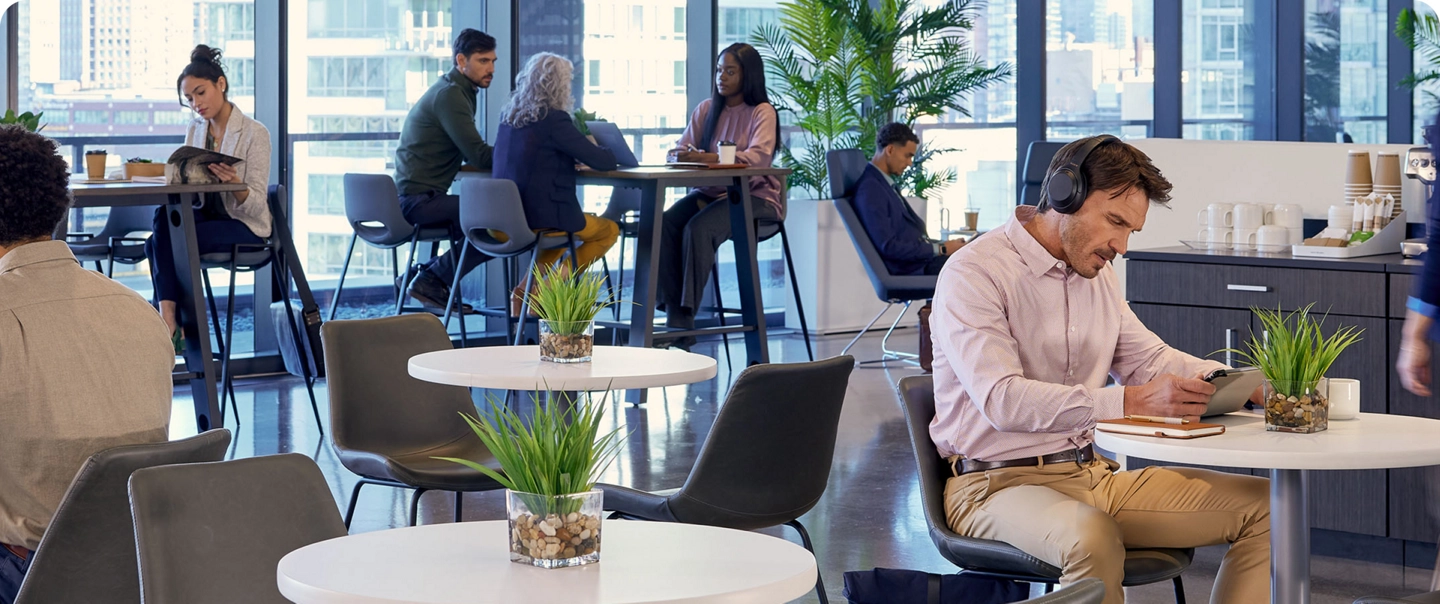
Breakrooms offer teams
space for reprieve throughout
the day.
Breakrooms offer teams
space for reprieve throughout
the day.
Breakroom
Breakroom
Breakroom Design Inspiration
Providing employees space to eat, recharge and socialize, breakrooms play a key role in a thriving workplace. Breakrooms give employees a space to connect, helping to foster clear-mindedness and creativity. Consider the benefits of creating a breakroom that promotes collaboration and well-being among your team.
Shop These Space
Breakroom Design Inspiration
Providing employees space to eat, recharge and socialize, breakrooms play a key role in a thriving workplace. Breakrooms give employees a space to connect, helping to foster clear-mindedness and creativity. Consider the benefits of creating a breakroom that promotes collaboration and well-being among your team.
Shop These Space
Shop Popular Categories
Shop Popular Categories
Pro Tips for Breakroom Design
Pro Tips for Breakroom Design

Include Various
Table Heights
Mix and match table heights to create a dynamic space. Taller tables are best for quick meetings while standard height options invite longer conversations.
Include Various
Table Heights
Mix and match table heights to create a dynamic space. Taller tables are best for quick meetings while standard height options invite longer conversations.
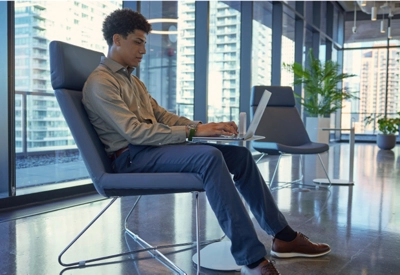
Consider Break Away and Huddle Spaces
Every employee is different. Create break away and huddle spaces to support individual work styles and to encourage greater interactivity.
Consider Break Away and Huddle Spaces
Every employee is different. Create break away and huddle spaces to support individual work styles and to encourage greater interactivity.

Support Social Connections
Well-designed break spaces foster interaction to support employee satisfaction, resulting in better business outcomes.
Support Social Connections
Well-designed break spaces foster interaction to support employee satisfaction, resulting in better business outcomes.
Get Complimentary Help From NBF Space Planning and Design Experts.
Get Complimentary Help From NBF Space Planning and Design Experts.
Whether you’re designing a huddle room, breakroom or break away space, give your teams what they need to succeed.
“My last several orders I have been so very satisfied with, especially the last orders of chairs I ordered for my breakroom.”
– NBF customer
Whether you’re designing a huddle room, breakroom or break away space, give your teams what they need to succeed.
“My last several orders I have been so very satisfied with, especially the last orders of chairs I ordered for my breakroom.”
– NBF customer
What Sets Us Apart?
What Sets Us Apart?
Pro Tip: Say Yes to Expert Support
We can make the process easier. Receive trusted guidance from our national network of 100+ experts.
Pro Tip: Say Yes to Expert Support
We can make the process easier. Receive trusted guidance from our national network of 100+ experts.

Get the Look for Less: Breakrooms on a Budget

How to
Set Up a
Lunchroom
How to
Set Up a
Lunchroom

How to
Create a Beautiful
Breakroom
How to
Create a Beautiful
Breakroom
Breakroom Office Cafeteria Furnishings—Chairs, Bar Stools & More
Our employee lunchroom furniture, also called office cafeteria furnishings, is ideal for companies of all types. Our great selection of breakroom tables and breakroom chairs make your lunchroom or break area a relaxing spot. We even have breakroom furniture that ships quick. From round dining tables to café height bar stools, there’s plenty to choose from here. Employee lunchroom furniture in any size or style will help your co-workers enjoy their well-deserved breaks.
Employee lunchroom furniture in this selection can breathe new life into an outdated break room. Office cafeteria furnishings can be found in both standard and café heights so that you may choose the most stylish and most practical option for your space. Corporate hospitality and home dining areas alike can benefit from these modern and traditional breakroom sets. Office cafeteria furnishings can be used for other business functions as well such as facilitating meetings and outfitting a reception area.
Looking for hospitality seating and dining surfaces for your employees or guests? Break room chairs in standard height, counter height and bar height will provide a comfortable place for individuals to rest while they eat, read or socialize. When it comes to tables, there’s a wide range of options at your fingertips from traditional wood styles to weather-proof selections for use outside. Outdoor lounge tables are generally made of metal or glass so as to deter damage that would otherwise be inflicted by the elements.
Break room furnishings can also function as tools for use in casual conferences. Meeting room furniture includes comfortable chairs, stylish tables and some storage space for important materials. Whether searching for conference furniture, lunchroom furniture or any other type of business furnishing, you won’t be disappointed by our selection. National Business Furniture has been proudly offering furniture that works from people who care for nearly 50 years.
Breakroom Office Cafeteria Furnishings—Chairs, Bar Stools & More
Our employee lunchroom furniture, also called office cafeteria furnishings, is ideal for companies of all types. Our great selection of breakroom tables and breakroom chairs make your lunchroom or break area a relaxing spot. We even have breakroom furniture that ships quick. From round dining tables to café height bar stools, there’s plenty to choose from here. Employee lunchroom furniture in any size or style will help your co-workers enjoy their well-deserved breaks.
Employee lunchroom furniture in this selection can breathe new life into an outdated break room. Office cafeteria furnishings can be found in both standard and café heights so that you may choose the most stylish and most practical option for your space. Corporate hospitality and home dining areas alike can benefit from these modern and traditional breakroom sets. Office cafeteria furnishings can be used for other business functions as well such as facilitating meetings and outfitting a reception area.
Looking for hospitality seating and dining surfaces for your employees or guests? Break room chairs in standard height, counter height and bar height will provide a comfortable place for individuals to rest while they eat, read or socialize. When it comes to tables, there’s a wide range of options at your fingertips from traditional wood styles to weather-proof selections for use outside. Outdoor lounge tables are generally made of metal or glass so as to deter damage that would otherwise be inflicted by the elements.
Break room furnishings can also function as tools for use in casual conferences. Meeting room furniture includes comfortable chairs, stylish tables and some storage space for important materials. Whether searching for conference furniture, lunchroom furniture or any other type of business furnishing, you won’t be disappointed by our selection. National Business Furniture has been proudly offering furniture that works from people who care for nearly 50 years.






